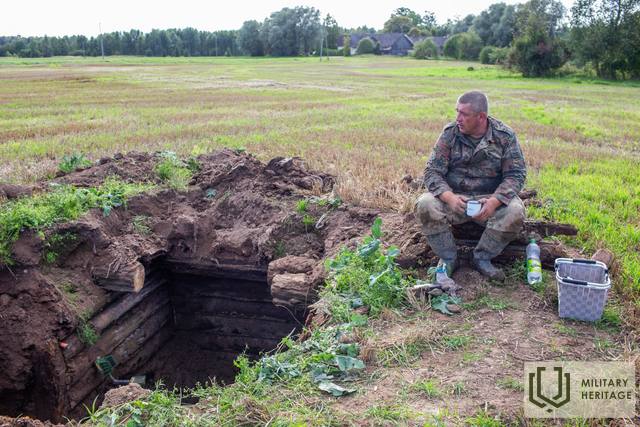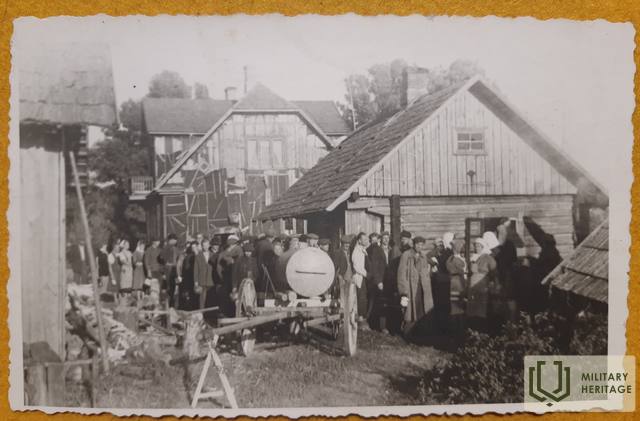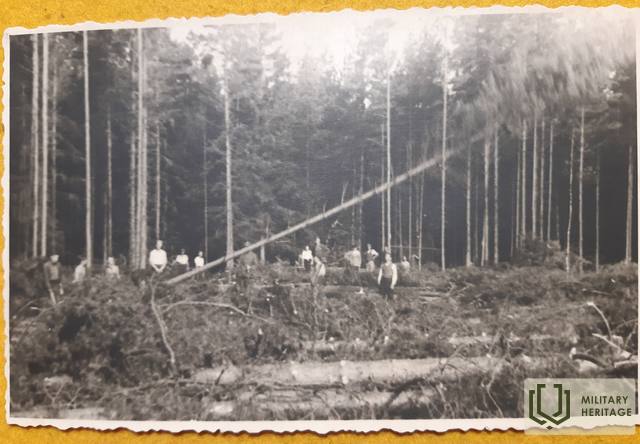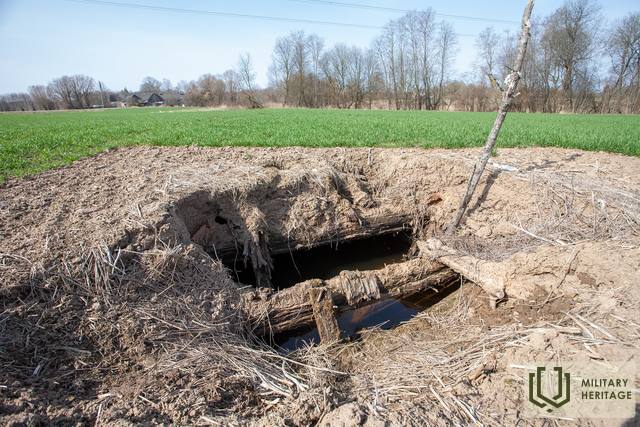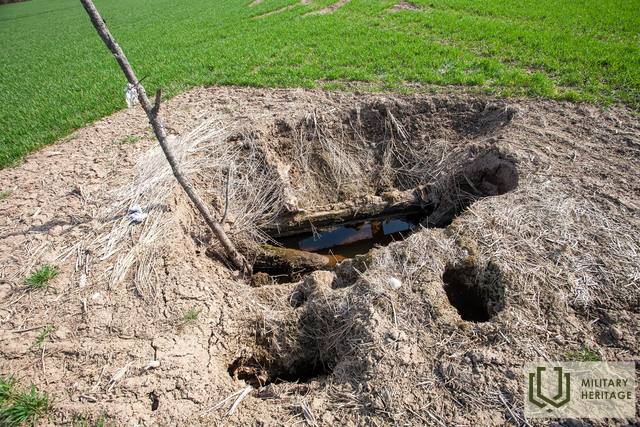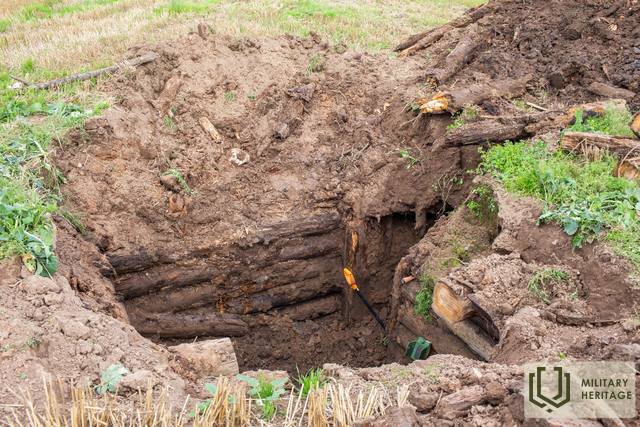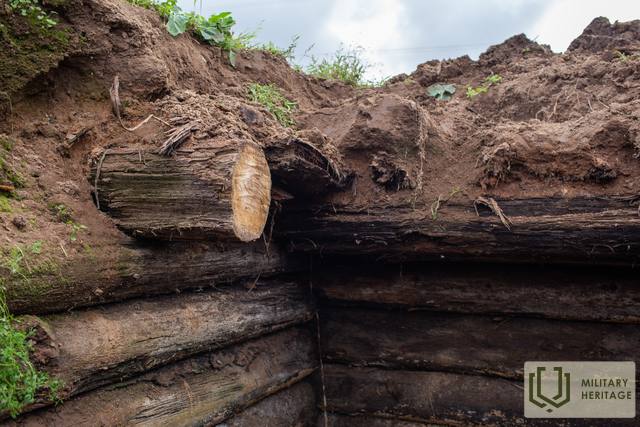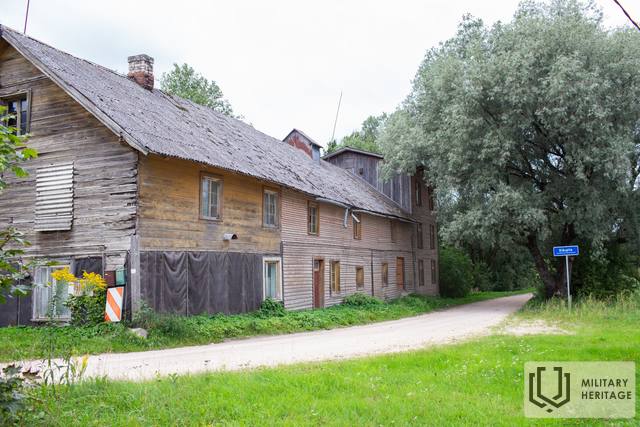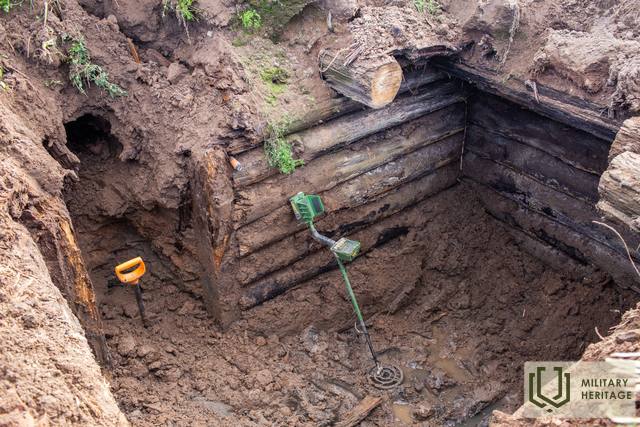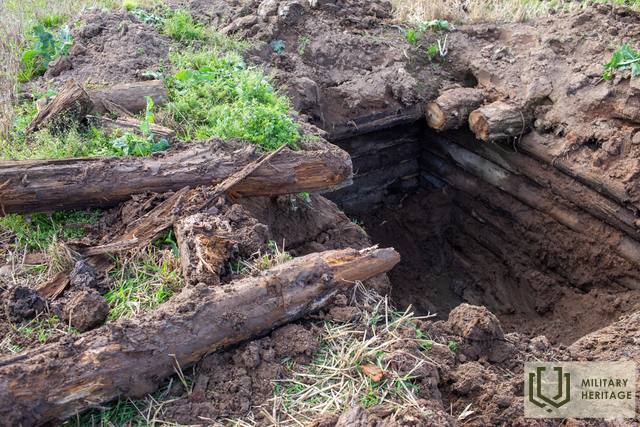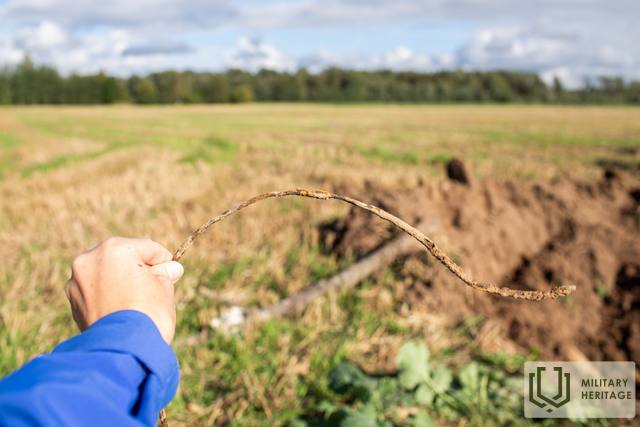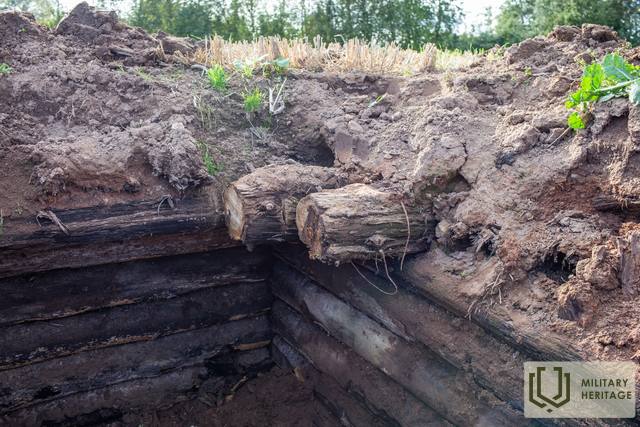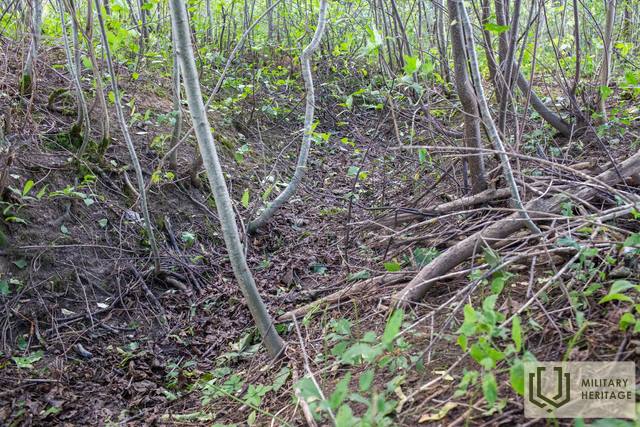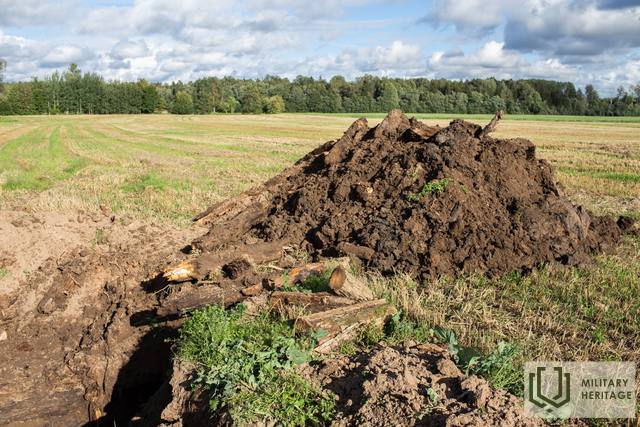Antrojo pasaulinio karo vokiečių armijos bunkeris
Bunkeris


 52
52

Jis buvo įsikūręs netoli namo „Brankšoje“, javų lauke.
2021 m. rugsėjo 2 d., vadovaujant Saulkrastų krašto istorijos entuziastui Andriui Grabčikui, bendradarbiaujant su žemės ūkio paskirties žemės nuomininke Ines Karlova, Antrojo pasaulinio karo metu Siguldos gynybos linijoje buvusiame vokiečių armijos bunkeryje buvo atlikti kasinėjimo darbai.
„Nuo bunkerio pastatymo praėjo 77 metai, patyrę ir sovietų armijos puolimą, ir per jį važiavusią žemės ūkio techniką. Tik prieš 3 metus jis iš dalies sudužo sunkiosios technikos smūgiams. Kad grindys nepasemtų vandens, buvo įrengta drenažo sistema su vandens kaupimo rezervuaru prie įėjimo, kuris prireikus buvo nusausinamas. Bunkerio grindys sumūrytos iš 10 cm skersmens apvalių rąstų ir buvo uždengtos šiaudais. Šis bunkeris nėra vienas iš didžiausių, bet jo visiškai pakanka maždaug 6 žmonėms. Šis bunkeris ne vienintelis šioje teritorijoje, bet vienas iš nedaugelio, kuris yra gerai išsilaikęs.“ – taip apie bunkerį pasakoja Andris Grabčikas.
Paskelbus informaciją internete, iš istoriko ir Saulkrastų dviračių muziejaus savininko Janio Seregino gautos 2 nuskenuotos istorinės nuotraukos su užrašu „29.08.44, Saulkrastai, Vidrižų valsčius“ ir komentaru: „Nuotraukos gautos iš Saulkrastų moters, kuri dabar jau mirusi. Pasak jos, Saulkrastuose apsigyveno pabėgėliai iš Pskovo ir Leningrado sričių, kuriuos vokiečiai išvijo iš namų atsitraukimo metu. Jie buvo įdarbinti kasant apkasus gynybos linijoje netoli Ķišupės. Vienoje iš nuotraukų matyti miške dirbantys žmonės. Tokiu būdu buvo gauti rąstai, kuriuos dabar galime matyti bunkeryje netoli Brankšų. Antroje nuotraukoje matyti, kaip jie šeriami paskirstymo punkte arba prie namo įrengtoje virtuvėje. Manau, kad tai Brankšų malūnas.“
Bunkeris išliko nuo Antrojo pasaulinio karo laikų Siguldos gynybos linijoje.
Bunkerio vieta pirmą kartą buvo ištirta 2021 m. balandžio mėn., tačiau dėl aukšto gruntinio vandens lygio kasimo darbai negalėjo būti atliekami.
Bunkeris buvo įrengtas žemės ūkio paskirties žemėje ir, atlikus iškasimus bei tyrimus, buvo užpiltas taip, kad netrukdytų žemės ūkio darbams.
Panaudoti šaltiniai ir literatūra:
Tiriamasis darbas Andrio Grabčiko, Gitos Memmėnos
Istorinės nuotraukos iš privačios Janio Seregino kolekcijos
Susijusi laiko juosta
Susijusi istorija
Apie vaikų kolonijos „Rūķīši“ įvykius prieškario ir Antrojo pasaulinio karo laikotarpiais
Vaikai buvo atimti iš partizanų rėmėjų šeimų. 1943 m. kovo mėn. Salaspilio stovykloje buvo 1100 vaikų. Apie 250 vaikų mirė nuo tymų, vidurių šiltinės ir kitų ligų, keli šimtai vaikų buvo perkelti į aplinkinių parapijų ūkius, o apie 300 vaikų atsidūrė vaikų namuose Rygos Jūrmaloje, Igatėje ir Saulkrastuose.
Saulkrastuose vaikai atsidūrė Latvijos vaikų pagalbos draugijos vaikų kolonijoje „Rūķīši“.




